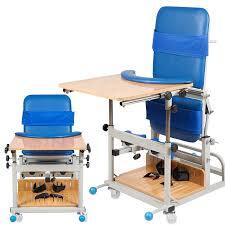A standing frame is a helpful tool for therapy. It helps people with mobility problems stand up straight. This simple device provides many benefits for physical health. It can improve posture, boost circulation, and strengthen muscles. Standing frames are often used in therapy and rehabilitation.

The Benefits of Using a Standing Frame

1. Improved Posture
Using a standing frame improves posture. It helps align the spine and body. People with muscle weakness or contractures benefit most. Good posture reduces the risk of long-term deformities. Over time, the core and back muscles grow stronger. This leads to better balance and support.
2. Better Circulation
Long periods of sitting affect circulation. Blood flow becomes limited. A standing frame encourages healthy circulation. It helps prevent swelling, blood clots, and poor oxygen flow. Standing also helps the heart function. It benefits overall health.
3. Stronger Bones and Muscles
Standing frames promote weight-bearing. This helps strengthen bones and muscles. People who spend time lying down or sitting lose bone density. A standing frame prevents bone loss and muscle wasting. It is key in fighting osteoporosis.
How a Standing Frame Works

A standing frame is a simple device. It holds a person upright and supports them. The frame has adjustable parts for the legs, hips, and torso. Straps keep the user in place. Some frames are mobile, while others stay in one spot.
Standing frames come in various designs. Some are designed to tilt for more comfort. Others have padding and extra supports for safety. Physical therapists often help pick the right frame. They make sure it suits the person’s condition.
Choosing the Right Standing Frame

| Factor | Details |
| Type of Frame | Options include supine, prone, and upright frames. |
| Condition | Think about the medical condition and physical needs. |
| Size and Capacity | Ensure the frame fits the user and supports their weight. |
| Adjustability | Adjustable frames offer height and tilt features for comfort. |
| Comfort Features | Look for padding, straps, and footrests for added comfort. |
| Portability | Some frames are portable, while others are stationary. |
| Therapy Goals | Match the frame with your therapy needs, like posture or strength. |
| Cost | Consider your budget and insurance options when buying. |
| Ease of Use | Choose a frame that is simple to operate and adjust. |
| Durability | Make sure the frame is built to last for long-term use. |
Types of Standing Frames

1. Supine Standing Frame
– Supports from the back. Ideal for people with little head control.
2. Prone Standing Frame
– Supports from the front. It helps strengthen core muscles.
3. Upright Standing Frame
– Keeps users in a vertical position. Best for people with good trunk control.
Availability in Other Countries
1. United States: Therapy standing frames are widely available through medical supply stores, online retailers, and specialized rehabilitation facilities. Insurance may cover some costs depending on the individual’s needs and specific insurance plans.
2. Canada: Similar to the U.S., therapy standing frames are accessible through medical supply companies, hospitals, and rehabilitation centers. Government assistance programs may provide funding or subsidies for those who qualify.
3. United Kingdom: In the UK, therapy standing frames can be obtained through the National Health Service (NHS) or private medical suppliers. Occupational therapists often assess the need and recommend appropriate devices.
Summary Comments
A standing frame offers many health benefits. It improves posture, increases circulation, and strengthens bones. It also aids digestion and reduces the risk of pressure sores. People using standing frames feel more independent and confident. They experience mental and social benefits as well.
Choosing the right standing frame is important. Consider the type, size, and adjustability. Look for comfort features and make sure it matches your therapy goals. By using a standing frame, people can improve their health and well-being.
Standing therapy can be a crucial part of rehabilitation. It helps with physical and mental recovery. Whether for short-term or long-term use, a standing frame is a valuable tool in therapy.

